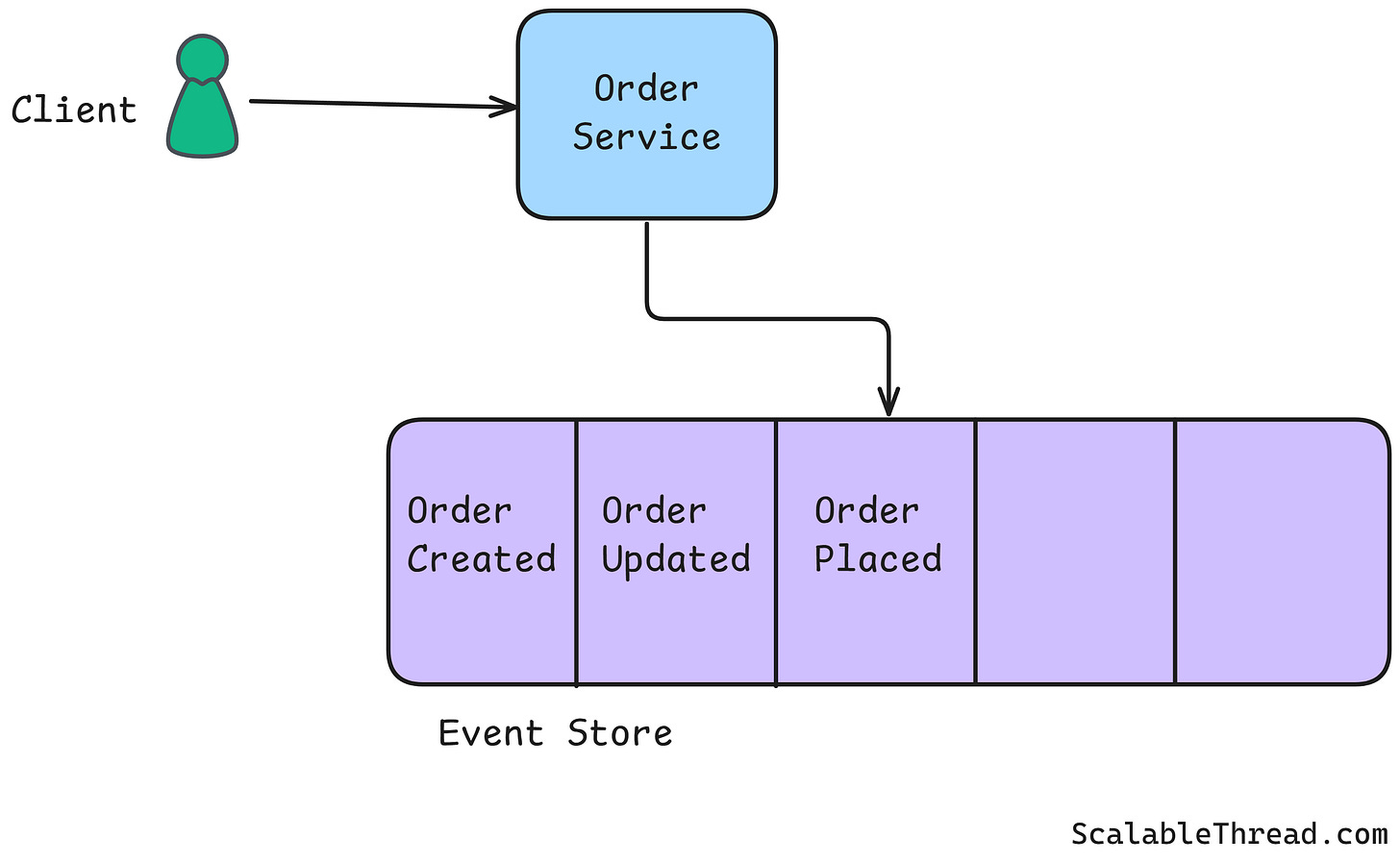What is Event Sourcing?
Understanding Event Sourcing, How it works, and How to Rebuild State
Event Sourcing
Traditional data storage typically focuses on the current state of an entity. For example, in an e-commerce system, you might store the current state of a customer's order: items, quantities, shipping address, etc. Event sourcing takes a different approach. Instead of storing the current state directly, it stores the events that led to that state. Each event represents a fact that happened in the past. Think of it as a detailed log of transactions on your bank statement. These events are immutable and stored in an append-only event store. The core idea is that an application's state can be derived by replaying events in the order they occurred, just like you can get your current bank balance by replaying all the transactions from the beginning. This makes Event Sourcing particularly useful for applications that require a high degree of audibility and traceability.
How Event Sourcing Works
Every change to the application state is captured as an event object in an Event Sourcing system. These events are then stored in an event store, a database optimized for handling event data. Here's a step-by-step breakdown of how Event Sourcing works:
Event Creation: When a user performs an action (e.g., placing an order), the application creates an event object that describes the action.
Event Storage: The event is stored in the event store. This store is append-only, meaning events can only be added and never modified or deleted.
State Rebuilding: To determine the current state of an entity (e.g., an order), the application replays all the events related to that entity from the event store.
Imagine an e-commerce application. Instead of storing the current state of a shopping cart (items, quantities, etc.), we store events like "ItemAddedToCart," "ItemRemovedFromCart," "QuantityUpdated," etc. Each event represents a specific change to the cart. The current state of the cart can be reconstructed at any time by replaying these events in order.
Rebuilding State in Event Sourcing
Reconstructing the state from events involves reading all the events related to an entity from the event store and applying them in sequence to reconstruct the current state. It's like simulating all the changes that have occurred to construct the current state. For example, consider an e-commerce application where an order goes through various states like "Created," "Paid," and "Shipped." To determine the current state of an order, you would:
Retrieve all events related to the order from the event store.
Initialize an empty order object.
Apply each event to the order object in the order in which they were stored.
By the end of this process, the order object will reflect the current state of the order.
Use of Snapshots in Rebuilding State
As the number of events grows, replaying the entire event stream to reconstruct the state can become slow and inefficient. This is where snapshots come in. A snapshot is a saved state of an entity at a specific point in time. Instead of replaying all events from the beginning, the application can load the latest snapshot and then replay only the events that occurred after the snapshot was taken.
Pros and Cons
Pros
Auditability: Event Sourcing provides a complete history of changes, making it easy to audit and trace an entity's state over time.
Debugging: The ability to replay events makes it easier to debug issues by reproducing the exact state of an entity at any point in time.
Flexibility: Since the state is derived from events, new features can be easily added, or existing features can be changed without affecting historical data.
Cons
Complexity: Event sourcing adds complexity to your application. You must design your system around events, implement state rebuilding, and manage snapshots.
Storage Requirements: Storing all events can lead to significant storage requirements, especially for long-running systems with many events.
Data Privacy: Storing all events can raise privacy concerns, as historical data may contain sensitive information that must be managed carefully.
If you enjoyed this article, please hit the ❤️ like button.
If you think someone else will benefit from this, then please 🔁 share this post.



